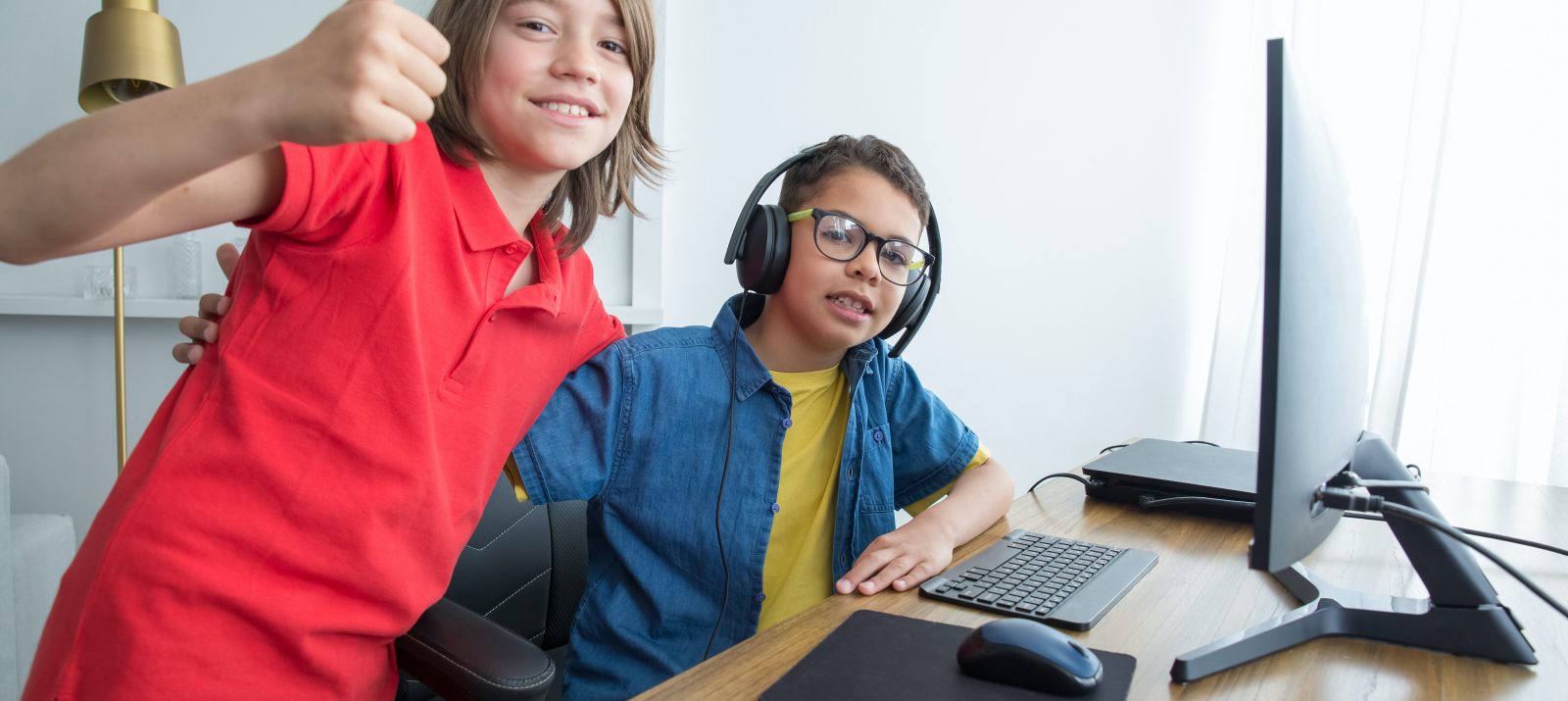
Addiction, violence, conspiracy theories, cyberbullying – sometimes you can get the impression that the Internet only brings out the worst in us.
But they do exist: the good sites on the worldwide web. The positive and age-appropriate content, the good news, the community and cohesion. We present valuable digital offerings for children and young people.
For the youngest users, the Internet is a vast space that is difficult to navigate at first. There is a gigantic offer of pages and content. But beware: most of the sites are aimed at adults.
Especially the classic access to the web via Google -search engine often leads to results that are, at best, boring and incomprehensible for children, at worst, frightening and traumatizing. But there are other ways: With children of kindergarten and elementary school age, parents are best off turning before Google – and using children’s search engines. The best-known search engine is fragFINN. Here, every search displays child-friendly, vetted sites that are guaranteed to be fun.
If you are looking for good websites or apps, you don’t have to despair at the flood of offers, but will find recommendations and tips bundled together. Seitenstark features more than 60 tested children’s websites with high standards of quality and protection of children and young people from harmful media. Here children can find everything on topics such as nature and the environment, music and film, history and politics, or religion. The app database of the DJI (German Youth Institute) presents good children’s apps. Those interested in news will find age-appropriate information on news sites for children. The EU initiative klicksafe gives children valuable tips on how to use media safely.
But the offer does not have to remain purely passive: many websites offer opportunities to participate, such as the safe photo community Knipsclub, the portal Kindersache or other participation platforms.
And when the children get older? Then, in most cases, inappropriate search results are no longer the problem. Young people are moving more independently online, using social media platforms in particular for information and exchange. There they are confronted with many things – from negative headlines and political extremes to communication risks such as hate and bullying. And dubious role models, unrealistic life goals, such as those conveyed by influencers, can also be problematic.
For parents, it’s important to stay in communication with their child about what content they encounter online, what’s okay – and where they should rather steer clear.
Also, parents can give suggestions on valuable sites on the net. If you’re looking for positive news, for example, you’ll find it on sites like https://goodnews.eu/ or ZDF ‘s “Good News”. And thus perhaps creates a balance to the eternal negative news spiral, the doomscrolling.
There are many people and providers on social media platforms who stand for good, positive topics and values – and also good dealings. Starting with activists like Luisa Neubauer on Instagram for the climate or Raul Krauthausen on Facebook for inclusion. Under hashtags like #bodypositivity, stars like Sarah Nicole Landry convey a positive body image. This can be good for adolescents going through puberty.
And the great thing is that if you start following positive people and content, the algorithm helps you right along and flushes even more pleasant content onto your screen. This can quickly create a friendlier, more positive bubble where young people can feel more comfortable and safe than in the unfiltered social media world.
Whether for children, teenagers or adults, one thing is clear: There’s everything on the Internet. The good news and the bad, the beautiful sides and the terrible, the nice encounters and the unpleasant ones. Just everything that people have up their sleeves. And on and offline, we can and must choose well for ourselves what we want to occupy ourselves with.
Therefore, accompany your child to the net. Use – in consultation with your child – solutions for technical youth media protection such as settings on the smartphone, youth protection apps or special software. This can be used to secure devices and filter out content that is not age-appropriate.
Show your child the “good parts,” suggest content, and also talk about how they can choose content, why they should choose critically, and the impact the people and issues we engage with every day can have on us. The klicksafe materials, for example, are suitable for discussions about media use or for agreeing on rules with each other.
And if you do have unpleasant encounters with hate, extremism or the like, it’s also good to know the right places to go. We present these in the article “Digital advice services for young people and parents“.